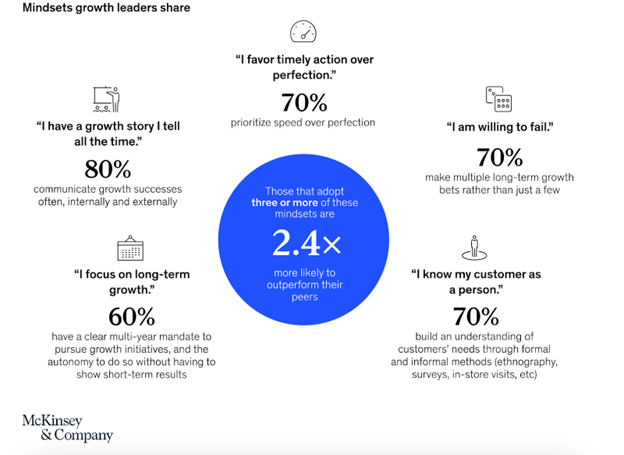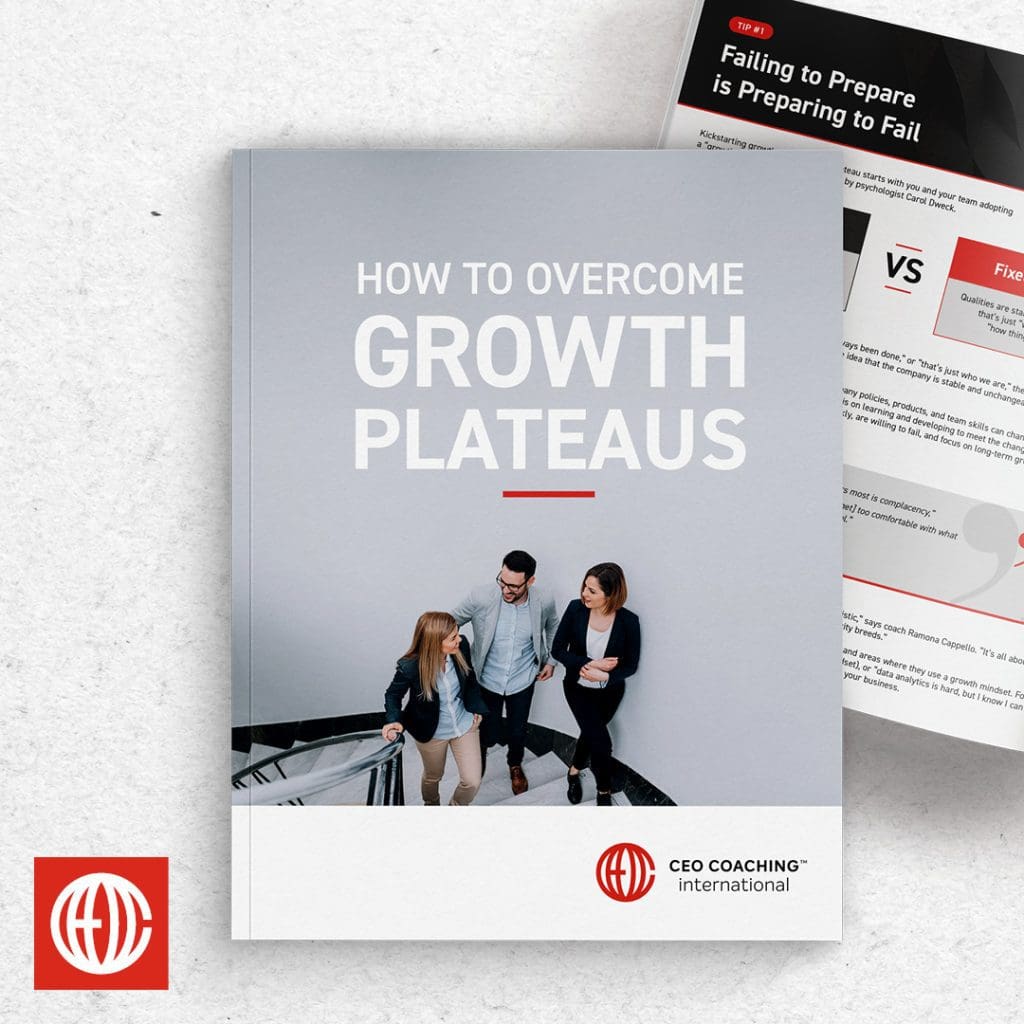
Setting growth goals is easy. We want unicorn-style growth and the kind of beautiful charts that go up and to the right in a smooth green line.
But growth doesn’t always look like that. Some weeks and months crush our goals — and some, well, not so much. “It’s really easy to get early wins,” says coach Ramona Cappello, “and then, all of a sudden, it’s really hard to keep that momentum going.”
At some point in your business, you’ll hit a wall. It happens to everyone. Things slow down or get stuck. Processes break down. Team members that rocked the early-stage growth phases struggle to lead as the company gets larger. Any number of reasons can create a growth plateau.
What matters is how you address it.
Kickstarting growth after hitting a plateau starts with you and your team adopting a “growth mindset,” a concept created by psychologist Carol Dweck. In this post, we’ll talk about what it means to have a growth mindset and how you can borrow these concepts as you build your own company culture to help overcome a growth plateau.
What is a growth mindset?
If you say or hear the phrase, “That’s how it’s always been done,” or “that’s just who we are,” then it’s likely you’re operating with more of a fixed mindset. This is the idea that the company is stable and unchangeable. You are who you are.
A growth mindset, by contrast, is the idea that company policies, products, and team skills can change and be improved with effort and time. This puts the emphasis on learning and developing to meet the changing needs of the marketplace. CEOs with a growth mindset move quickly, are willing to fail, and focus on long-term growth as a key part of their vision.
As an individual, everyone has areas where they use a fixed mindset and areas where they use a growth mindset. For example, you may say, “I’m just not good with numbers,” (a fixed mindset), or “data analytics is hard, but I know I can improve” (growth mindset). You can apply this to almost every area of your business.

It’s important to shift your operating mindset to growth as much as possible, across every function. That’s because companies with a growth mindset are 2.4x more likely to outperform their peers, according to McKinsey. You’ll only break through your growth plateau if you believe you can.
Here’s how to foster a growth mindset as a cultural value:
1. Ask hard questions
This requires setting a clear vision of what that looks like and how to get there, and encouraging the entire team to participate. You’ll need to ask yourself and your team a few hard questions:
- What am I doing now that I would stop doing if I was competing with my company? Every strategic plan includes what you will do, but what about what you won’t do? Take a long look at your existing company processes and cultural practices and determine what’s no longer helping you grow.
- What am I not doing now that I would start doing in my new company? A growth mindset invites change and a chance to learn. If you’re stuck in a plateau, define the distance between where you want to be and where you are now, and work to close the gap.
- If I were a competitor, how would I put my company out of business? Now, it’s time to think like a winner. Where are you most vulnerable? Take a page out of your competition’s playbook and use it as your own blueprint for new, better, bigger things.
Complacency is a surefire way to stay stuck. Forget about normal and think about what you would do differently. That will help determine what levers you can pull to push past your plateau.
2. Be willing to fail and learn
You won’t succeed 100% of the time. That’s just unrealistic.
If you are feeling stuck, that’s precisely the time to experiment. Create a communication channel where you clearly define the problem or opportunity and a mechanism for people in the company to bring ideas and solutions and be rewarded for that.
A dedicated process for brainstorming new ideas could look like:
- Internal brainstorming conferences with team members from around the organization
- A feedback form or survey for customers, vendors, and suppliers
- Customer roundtable sessions to solicit feedback
Test, learn, and scale what works. Then repeat. When you see something that works, that’s just the time to nurture it and see if it can work across multiple teams and divisions. That’s what will set you apart.
3. Growth requires an investment in learning
If you want to grow, then you need to focus on growth.
This sounds elementary, but so many CEOs make the mistake of saying they want to grow and then underinvesting in the people or processes that make that happen.
The best CEOs are not know-it-alls. They are learn-it-alls. If you’ve stalled out and aren’t sure where to go next, working with a third-party consultant or coach can be just what you need to shake things up. That’s because experts can guide you to the right answer tailored to your business and help you see the problem from a different perspective.
Whether they’re facilitating your planning session on how to get to the next level or holding your feet to the fire when numbers are lagging, a coach who’s been in your shoes before is just you need to stick to the system, maintain momentum and keep Making BIG Happen.
Learn more with our free eBook, How to Overcome Growth Plateaus
This five-step playbook is designed to help you re-energize your company growth. It’s filled with the wisdom and insights from our world-class coaches, all former CEOs who know what it’s like to push through a plateau and come out the other side.
Download the free ebook>>
About CEO Coaching International
CEO Coaching International works with CEOs and their leadership teams to achieve extraordinary results quarter after quarter, year after year. Known globally for its success in coaching growth-focused entrepreneurs to meaningful exits, CEO Coaching International has coached more than 1,000 CEOs and entrepreneurs in more than 60 countries and 45 industries. The coaches at CEO Coaching International are former CEOs, presidents, or executives who have made BIG happen. The firm’s coaches have led double-digit sales and profit growth in businesses ranging in size from startups to over $10 billion, and many are founders that have led their companies through successful eight, nine, and ten-figure exits. Companies working with CEO Coaching International for two years or more have experienced an average revenue CAGR of 31% (2.6X the U.S. average) and an average EBITDA CAGR of 52.3% (more than 5X the U.S. average).
Learn more about executive coaching | Meet our world-class coaches






